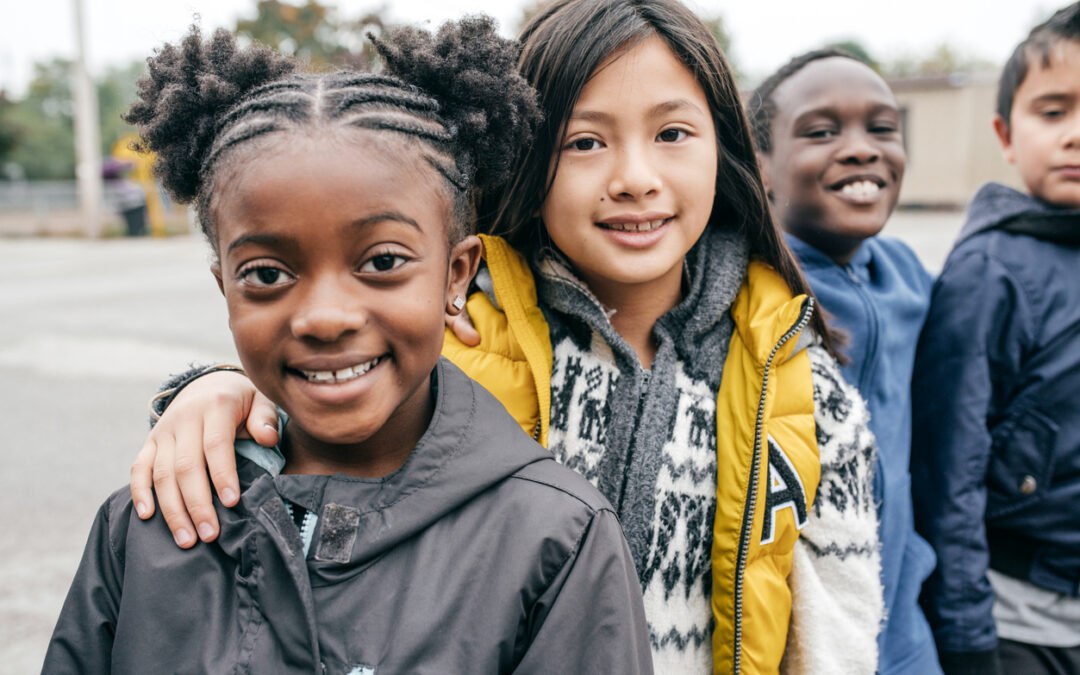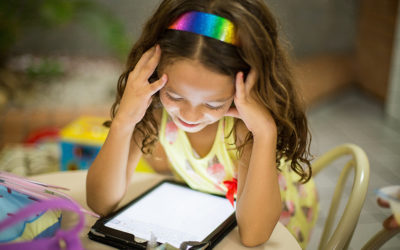Social and emotional learning is an approach to education that focuses on cultivating persistence, empathy, mindfulness and relationship skills, as well as mindsets that promote curiosity and self-regulation.
There isn’t a standardized taxonomy for social and emotional learning, so approaches widely vary. That said, they all generally entail building metacognition skills and an understanding of how students’ thoughts impact them – their learning, perceptions, emotions, relationships and decisions.
Through this, students also gain understanding into others’ perspectives, emotions, behaviors, and decision-making. This thinking empowers students to be intentional and mindful in their thoughts, their actions, and their connections they build.
Social and Emotional Learning for Readiness
“Accompanying the adoption of advanced technologies into the workplace there will be an increase in the need for workers with finely tuned social and emotional skills—skills that machines are a long way from mastering.” –Mckinsey & Company
By enhancing students’ social and emotional skills, students are empowered with future-ready skills. As technology automates the more technical functions in the workplace – and even in our personal lives – people’s more human qualities become a complement to this.
It is imperative to equip students with the necessary skills they need to be prepared for their future, like developing a growth mindset, practicing metacognitive thinking, and empathizing with others.
To be intentional when designing social and emotional learning experiences, approaches must target these skills. And computational thinking is a viable and effective approach to afford students the opportunity to practice these skills in hands-on and real-world contexts.
Computational Thinking for Social and Emotional Learning
First, what is computational thinking? Computational thinking is a set of skills and processes that enable students to navigate complex problems.
This multi-step process is a derivative from the process used to develop code and to program applications, but it is much more broadly applied and does not necessarily involve technology. At its core, computational thinking’s four key concepts – decomposition, pattern recognition, abstraction, and algorithmic thinking – enable people to tackle both large and small problems.
Because computational thinking results in an algorithm, which is a series of steps a person or computer uses to perform a task or solve a problem, it ensures that the process can be replicated or automated in the future. In this way, computational thinking results both in an answer to whatever question was asked at the outset and a systematic process for how students got there.
Computational thinking requires students to be mindful and intentional throughout the problem-solving process and builds essential attitudes like:
- Embracing ambiguity with confidence.
- Persisting through iteration and experimentation.
- Practicing teamwork.
- Leading learning with inquiry.
- Situating oneself as a lifelong learner.
Students learn to ask bold questions and persist through complexities toward yet-to-be imagined solutions. Students collect and analyze resources, think critically and creatively in collaborative environments, and develop a growth mindset by learning to embrace ambiguity and reframe challenges as opportunities, whether with or without technology.
By returning to those earlier mentioned social and emotional skills – “persistence, empathy, mindfulness and relationship skills, as well as mindsets that promote curiosity and self-regulation” – it becomes clear that these directly reflect the essential attitudes developed in computational thinking. By being a deliberate and metacognitive journey, computational thinking is a social and emotional process.
How can these be taught in tandem? While computational thinking implicitly builds social and emotional skills, there are ways to explicitly bring this connection to the forefront of instruction. Here are some ideas:
- Encourage curiosity and inquiry that prompts students to dive into research and lead their learning to find answers to real-world problems.
- Chart emotions throughout the computational thinking process so students acknowledge when they might be overwhelmed and recognize how persistence and methodical approaches to problem solving ease uncertainty.
- Work with peers to practice communication and collaboration, understanding that there is not necessarily one correct approach to problem solving, and use empathy to deepen relationship skills.
- Present alternative opinions that can be combed from data sets.
- Discuss the problem-solving journey and how failure is an inherent part of the process and reframe it as a learning experience that offers insight into the problem – ‘now students know what doesn’t work’.
- Use data to inform decision making and share with students how data is a valuable tool to make informed choices.
Social and Emotional Learning for Computational Thinking
Computational thinking is not just a foundation for technology skills like coding, but it is instead a vehicle to generate social and emotional attitudes needed for students to be future ready.
And this relationship between these concepts is symbiotic. Social and emotional learning also enhances computational thinking.
There are fears and uncertainties with emerging tech like AI and automation or drones and cyber skills that can be used for dangerous hacks. Ultimately, educators must also make technology safe and empower students to use technology as a force for good, in a world that so desperately needs it. This starts here, too.
Cleverlands author, Lucy Crehan, profiles an inner-city schoolteacher as she journeys around the world to investigate and understand the makings of ‘top-performing’ education systems to offer extensive insights into what educators can glean from these countries.
In reflecting on these systems, she focuses in part on the human side of teaching different skills – education must go beyond rote memorization or a purely mechanical view of different subject areas.
“Nuclear technology is sophisticated and was invented by learned individuals who would have scored highly on math and science exams. But what good is knowledge if it is used for destructive purposes – and what good is it if a child knows all their times tables, if their house is destroyed in a nuclear blast?”
Education must cultivate the whole student, blending so-called “hard skills” and “soft skills” so students are not only equipped with the knowledge they need to be successful, but also the means to achieve success and pull others along with them. This is what it means to be future ready. In bringing computational thinking and social and emotional learning into instruction – thereby humanizing data and 21st century problems and practicing essential social and emotional skills – a holistic future readiness becomes more accessible to students.
This post was originally published in 2019 and was updated in 2023 for accuracy, relevance, and resources.

Learning.com Team
Staff Writers
Founded in 1999, Learning.com provides educators with solutions to prepare their students with critical digital skills. Our web-based curriculum for grades K-12 engages students as they learn keyboarding, online safety, applied productivity tools, computational thinking, coding and more.
Further Reading
Creating a Classroom Guide to “Netiquette”: Promoting Respectful Online Behavior
In today’s digitally connected world, the importance of teaching students how to conduct themselves online has never been greater. The term...
Online Safety Definition & Basics
In today’s digital age where students are more connected than ever, online safety has become an important part of digital literacy education. With...
A Crash Course in Digital Footprints: Teaching K-12 Students the Importance of Online Contributions & Interactions
In today's interconnected world, every click, post and search we make online contributes to our digital footprint, a complex and often permanent...




